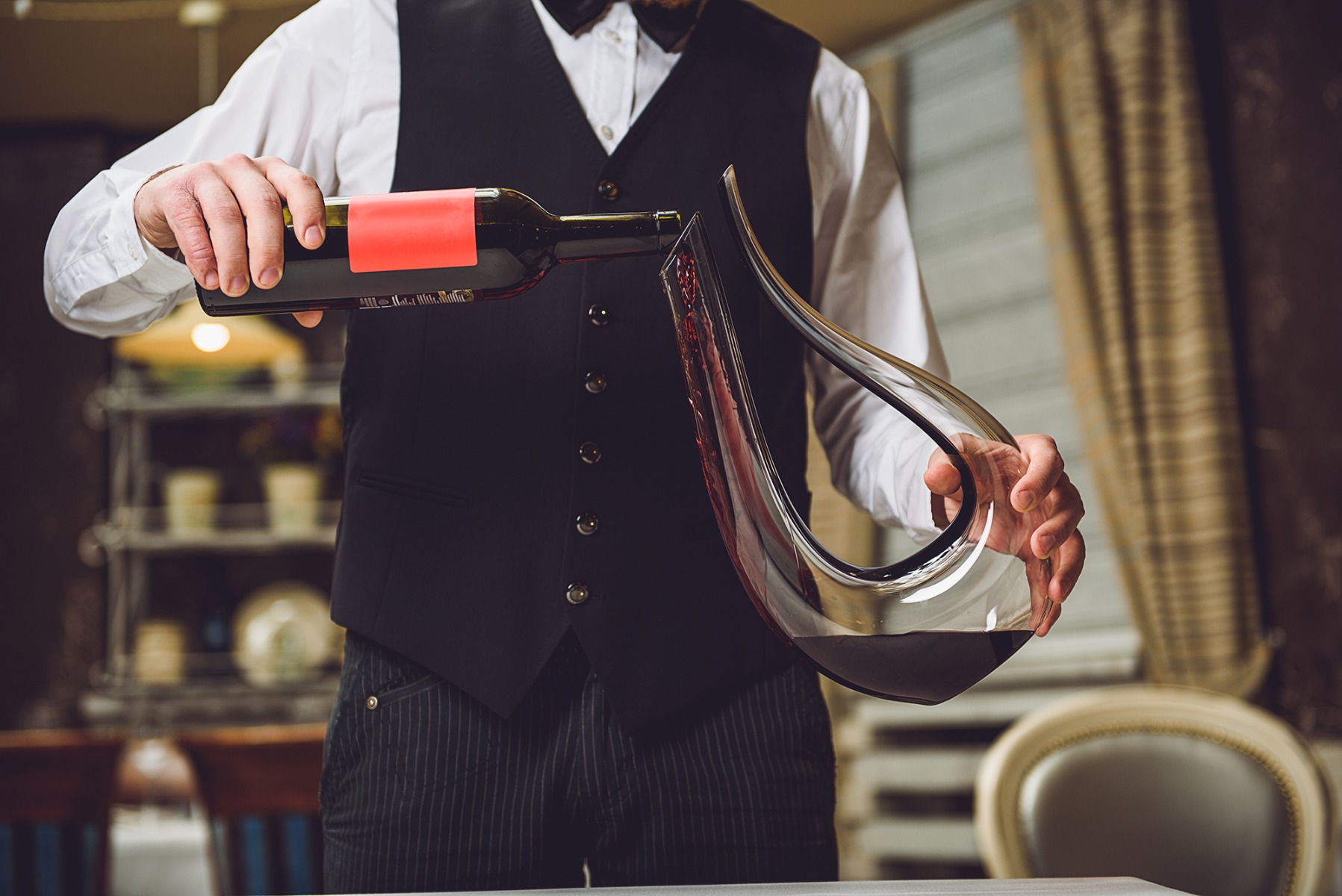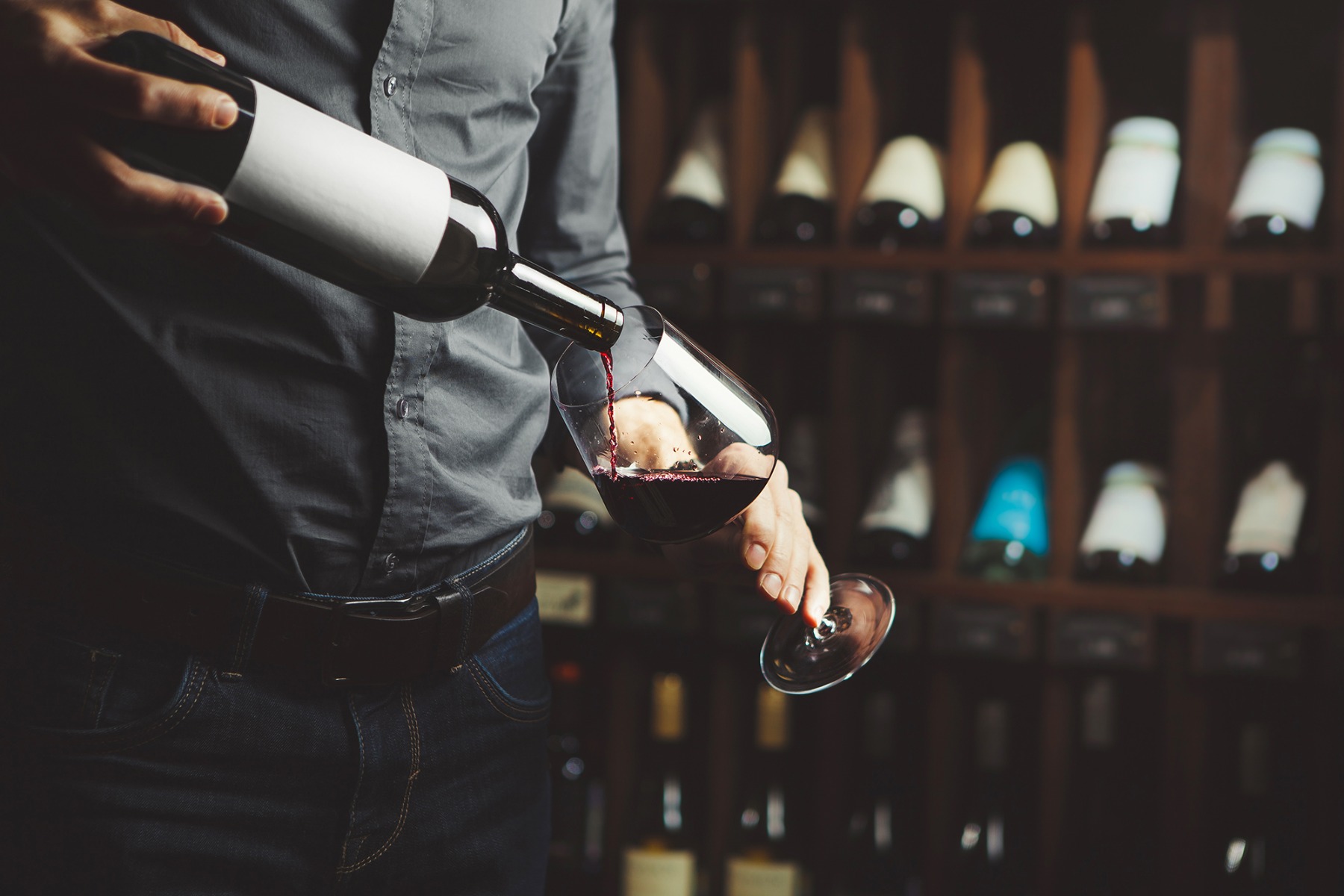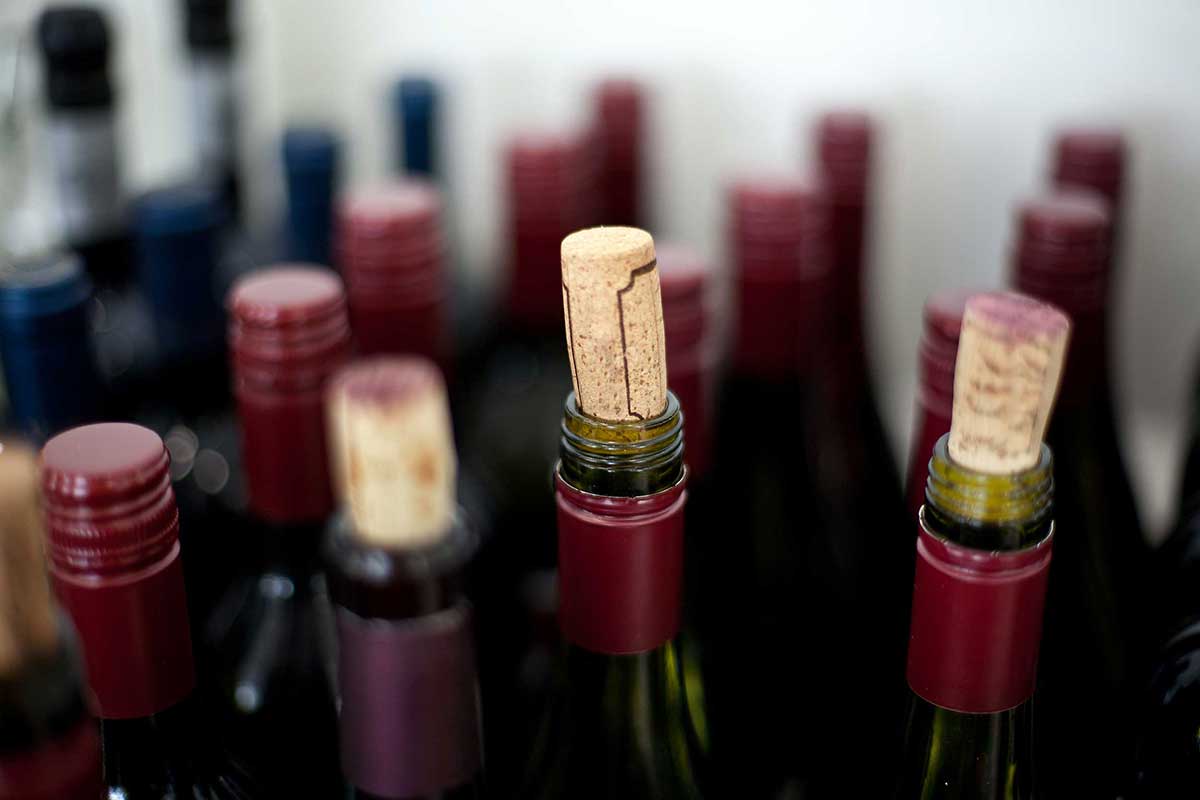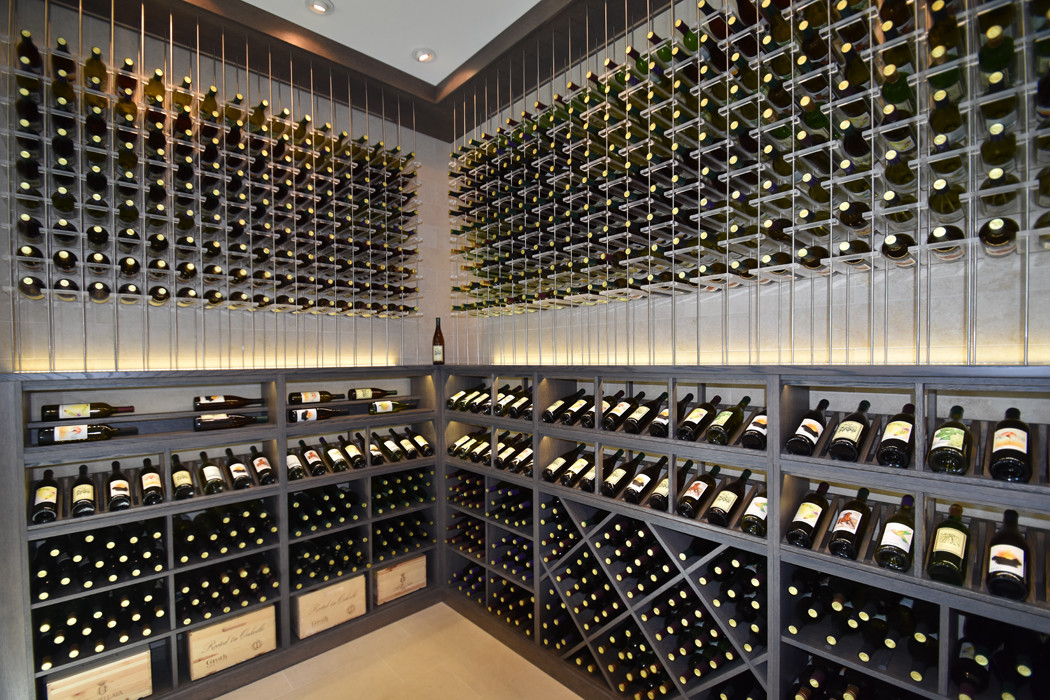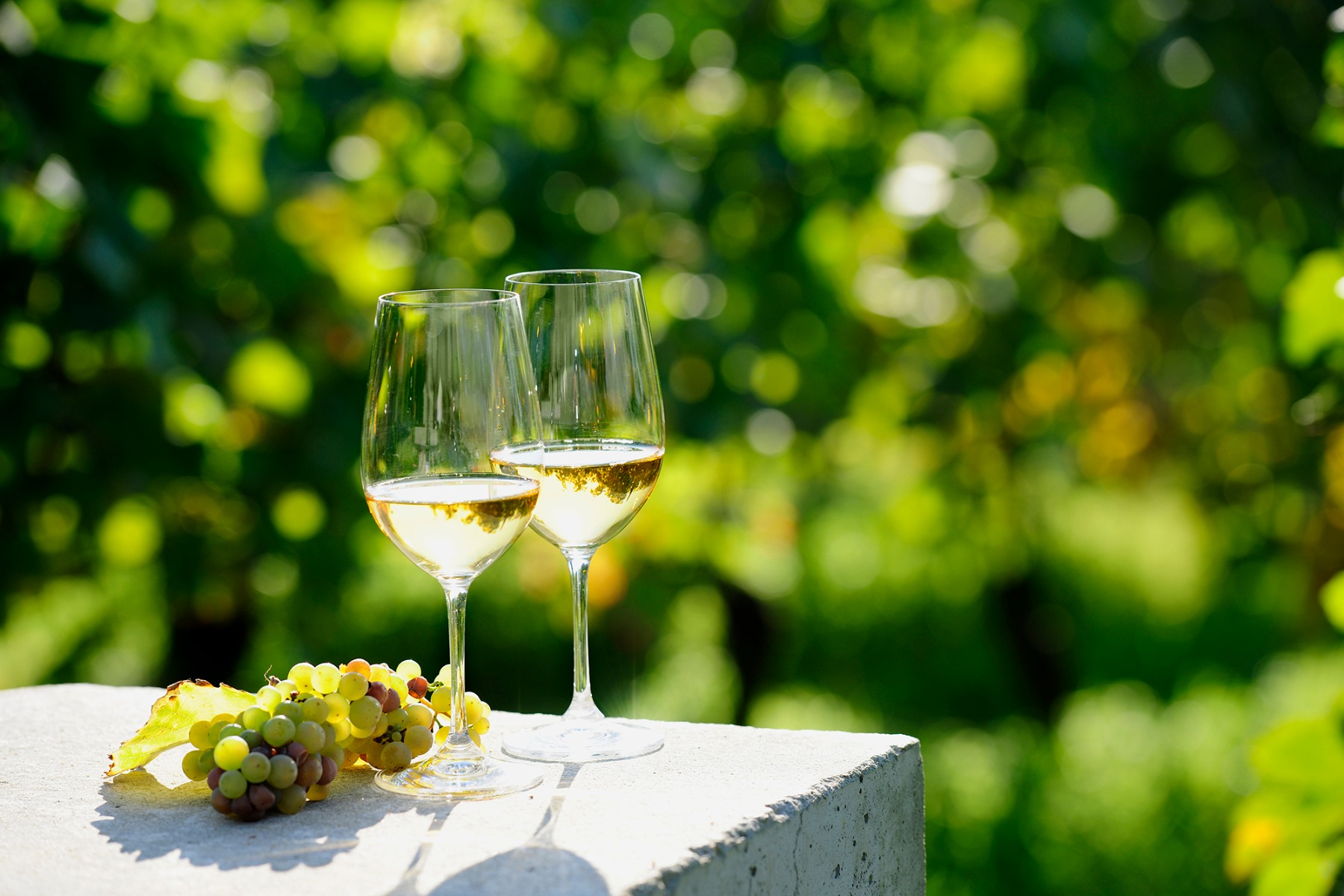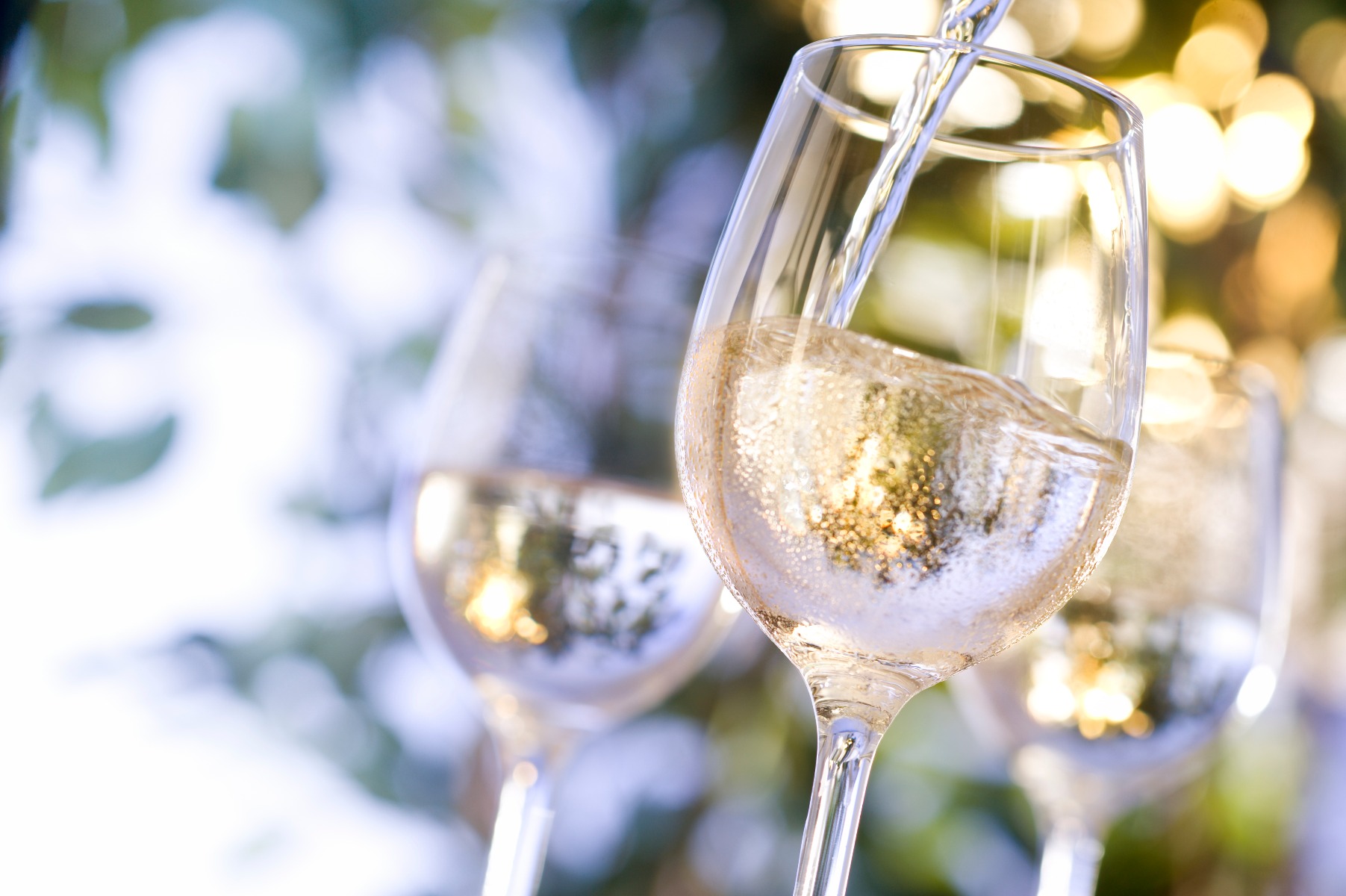How to Store Red Wine
Red wine is the favorite of many collectors. With proper storage, red wines can age and develop over years, or even decades. Like all wines, red wines should be stored in a cool location, between 55 to 58 degrees Fahrenheit. Red wines are happier at slightly higher temperatures than whites, so it makes sense to store bottles of red wine at the top of your wine cellar or cabinet since heat rises.
A vibration free environment is especially important for storing and aging red wine. Red wine develops sediment more easily than white wine. The wine cellar environment should also be dark and humid. You can read more about the science of aging wine and wine cellar conditions in the education center.
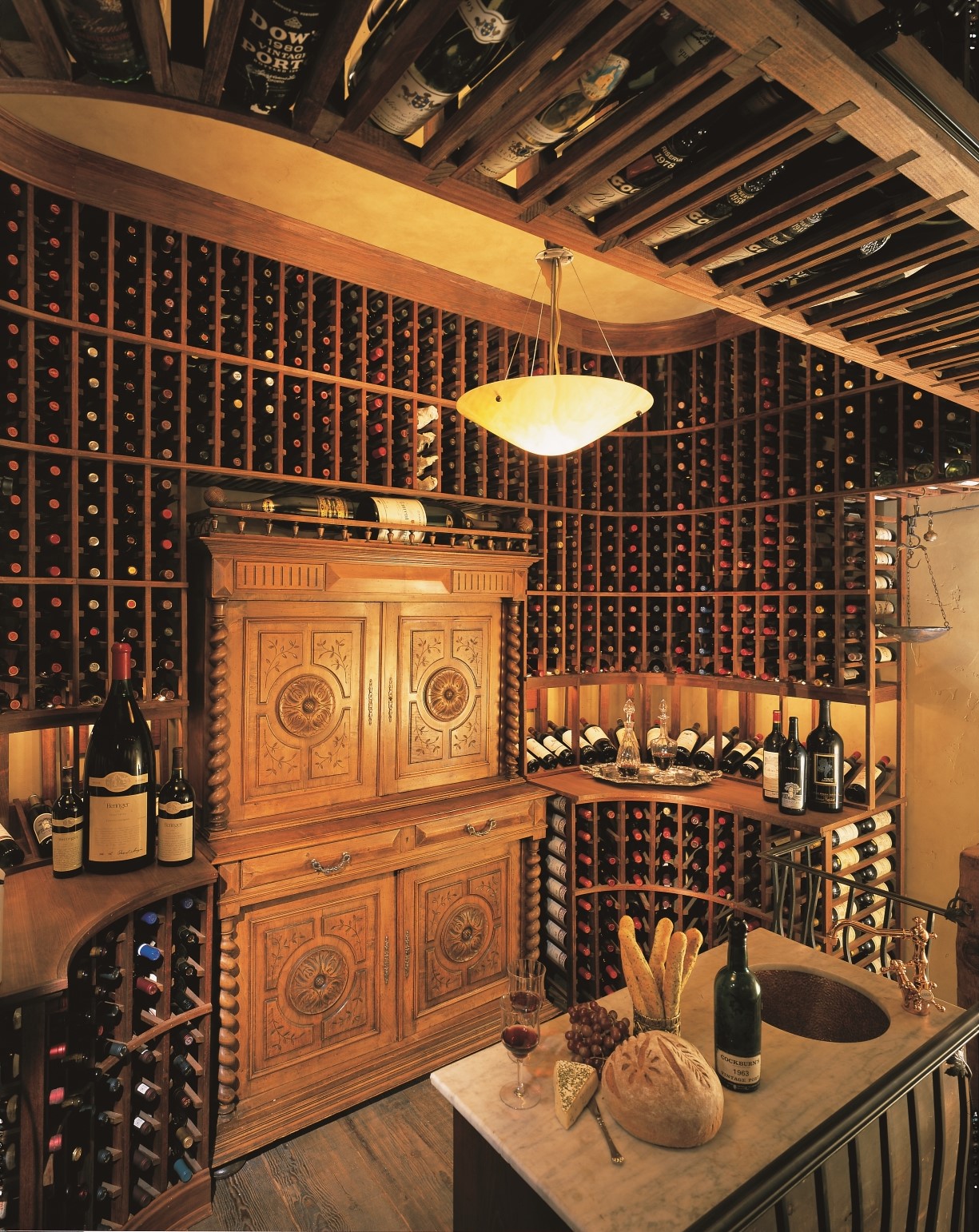
This traditional custom wine cellar in Rancho Sante Fe, California, appears bigger than it actually is – thanks to the great design and implementation from the team at Vintage Cellars.
How to Serve Red Wine
When serving a bottle of red wine that has been cellared, you may want to allow it to warm up a little. Full-bodied, intense red wines can be served as warm as 65 degrees Fahrenheit. Medium-bodied reds will be best at around 60 degrees, and the lightest fruity red wines will be delicious at wine cellar temperature. With a young red wine, it can be beneficial to decant first so that it will breathe a little as it warms.
Wine Serving Temperatures for Red Wines
- Full-bodied Red Wines: 60 to 65 degrees Fahrenheit
- Medium-bodied Red Wines: 60 to 65 degrees Fahrenheit
- Light Fruity Red Wines: 55 to 60 degrees Fahrenheit
Decanting Red Wine
Decanting an aged red wine is a good idea, though older wines should not be allowed to sit too long. Red wine develops sediment as it ages, and pouring it into a decanter rather than straight into the glass allows you to keep the sediment in the bottle.
Large Red Wine Glasses
Large-bowl wine glasses are best for red wine, allowing a large surface area to breathe. You can buy glasses specific to varietals, but it´s most important to just choose a large-bowled glass and leave enough space for swirling.
Properly Opening Your Bottle of Wine
There is a specific process to opening a bottle of wine to avoid problems that can happen while opening and serving your wine.
The process for properly opening your bottle of wine is outlined in our article How to
Properly Open and Serve a Bottle of Wine.
Storing Red Wine after Opening
If you must store a bottle of red wine that has been opened, recork it if possible (some bottle openers can also recork) or use a wine bottle stopper and place it in the refrigerator. All but the more delicate aged reds should keep for a couple days. If you want to be able to serve wine by the glass, or if you often store opened bottles, a preservation system might be right for you.
More About Storing and Serving Wine
We have written three articles that go into the detail of the differences for storing red wine,
white wine, and champagne and sparkling wines.


